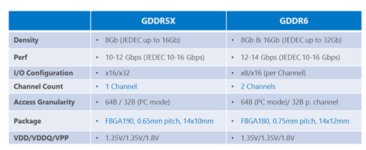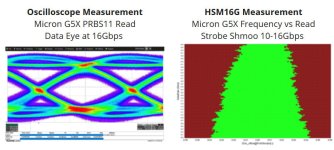This is how i see things going, it can go one or two ways. Either consumer volta will have 6SM per GPC or 7SM per GPC with 128FP32 cores per SM. Although i don't know if they will put 2xFP16 capable FP32 cores in consumer Volta, like they didn't with consumer Pascal. Consumer pascal had dedicated FP32 shaders, which is why they couldn't run FP16 at 1:1 at the least.
All of these assume clocks at 1600-1800, with the theoretical considering 1800 and not the base clock, since the majority of Pascal cards run at 1800 and not the base clock which their theoretical performance is calculated with.
So with 6SM per GPC we get:
GV102 6GPC - 4608 - 16.5 Tflops
GV104 4GPC - 3072 - 11.1 Tflops
GV106 2GPC - 1536 - 5.5 Tflops
GV108 1GPC - 768 - 2.7 Tflops
With 7SM per GPC we get:
GV102 6GPC - 5376 - 19.3 Tflops (same as uncut GV100)
GV104 4GPC - 3584 - 12.9 Tflops (Same as Cutdown GP102 / 1080Ti)
GV106 2GPC - 1792 - 6.5 Tflops
Gv108 1GPC - 896 - 3.2 Tflops
Either Nvidia will cheap out on cores to save die size and go with option 1. And instead set base clocks to 1800 - 2000 MHz
Or they go with Option 2 and have the same clock range as Pascal. But then they have to deal with making larger Die's, 12nm does not offer a large density saving, it is only an improvement on 16nm, not an entirely new node.
The other thing is that consumer volta will only have the FP32 cores, no INT 32/16, Tensor or FP64 cores.








